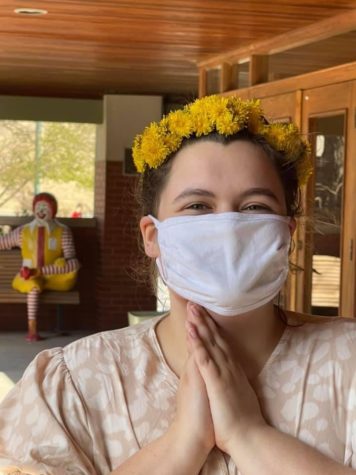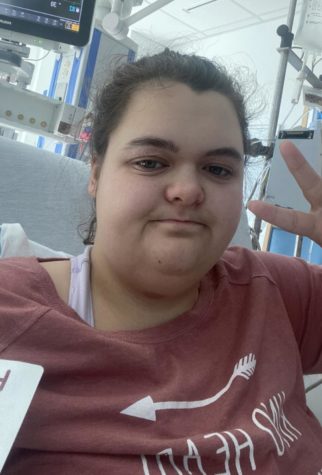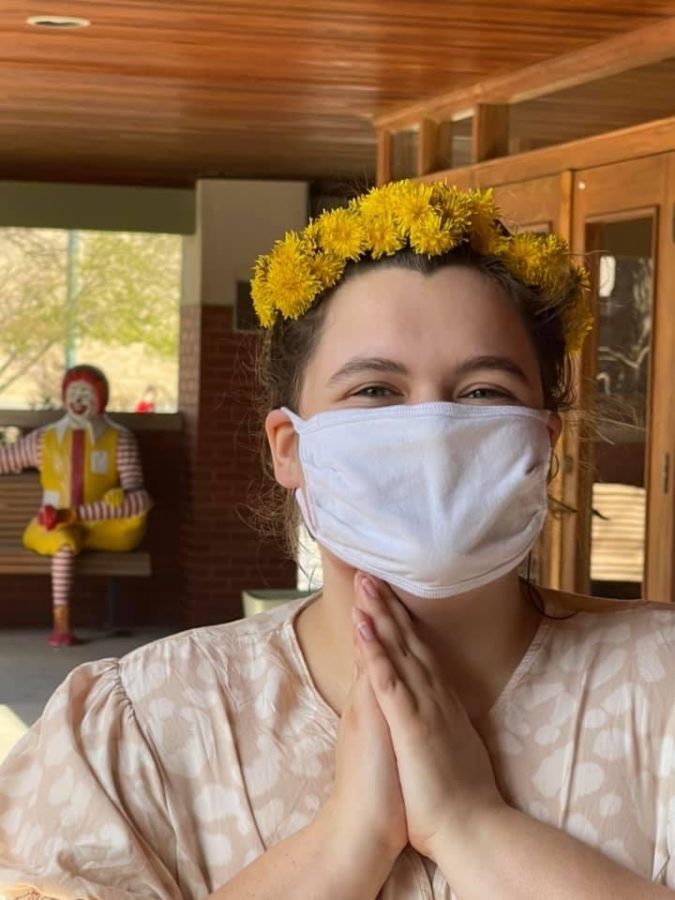Invisibly Ill
Analiesa Hollowood, staff reporter, describes her experiences with Amplified Pain Syndrome, an invisible chronic pain illness.

Waking up is a difficult task for any teenager, though most typically have the ability to move despite their zombie-like state. I, on the other hand, sit-up every morning, overcome by the realization that my legs aren’t moving. No matter what my brain says they won’t move. So then I must spend the next 10 to 20 minutes massaging and desensitizing my legs until the nerves get the message, you gotta move. Once I get up the pain flare truly begins; it starts in my legs, a tight, burning sensation that spreads up my body, eventually finding a home in my stomach and joints. I move and nausea hits like a truck. As I empty the contents of my stomach, I can’t help but wonder: Why me?
Sophomore year, I was diagnosed with Amplified Musculoskeletal Pain Syndrome; more recently I have been diagnosed with Functional Nerve Disorder. AMPS and FND are nerve conditions in which my nervous system overreacts to everything. I feel pain for longer amounts of time and at a higher extremity than most. There is no cure, and no medication that works, just coping strategies and a four-pronged approach to manage pain. An article sourced by Cleveland Clinic, describes AMPS:
This all began in August 2020 when I got food poisoning. It was in the midst of a pandemic and, despite knowing I should be recovering, I wasn’t. After three weeks, the symptoms still wouldn’t go away. I wasn’t holding donw food: my mom tried her best to keep me hydrated by giving me teaspoons of gatorade, even though I would quickly throw it up. I was in constant pain that can only be comparable to a scene from a horror movie. Eventually these symptoms lead to a two month hospitalization. I had a feeding tube for 35 days because my stomach would not tolerate food and the psychologists misdiagnosed me with an eating disorder. It was probably the most traumatizing months of my life, and it contributed to a lot of my mistrust in the medical community. I had no diagnosis, solutions or hope. I went through a lot of dark times, grappling with not wanting to fight anymore. I am still plagued with memories that I had once repressed. Every day was just unending pain with no hope for the future. Being virtually a part of the school play at the time and the companionship and support of my friends are what kept me alive. Eventually it did get better, I was diagnosed after five months of suffering. Not only did I have answers, but a solution was in sight.
In April 2021, I went to Rehabilitation for Amplified Pain Syndrome (RAPS). This program pushed me harder than I knew was possible. The only way to treat AMPS is by pushing through: by ignoring the pain, exercising, desensitization, and self-regulation. I spent eight hours a day, five days a week going through intensive physical and occupational therapy. It was hell.
The treatment for amplified pain is comparable to a coach dealing with complaining athletes: the, “You think that hurts I’ll show you what hurts” method. I was told to find what made things worse, and then torture myself with it. For example, heat and pressure would increase my pain – so my treatment plan included submerging myself in scalding baths with the jets on. I spent hours sobbing in stairwells, being forced to climb them repeatedly despite the agony my muscles were in, begging for breaks that would not come. Afterall, my pain wasn’t dangerous and, if I could prove that to my nerves, eventually they’d get the message. The program, despite its difficulty, was successful. I was able to go from a bedridden state to being the fully functional young adult I am today. This program was so helpful and super fascinating with how it works. 60 Minutes Australia did a segment on the RAPS Program in 2019.
Now as I mentioned before, I’m not out of the woods yet. Every day I must make the conscious effort to exist. I wake up practically paralyzed, so sleeping in isn’t often an option. I get to school and can’t eat breakfast unless I want to spend the first hour in the bathroom vomiting. The trauma I went through led to an eventual PTSD diagnosis. Doctors, revealing that yet another test has come back inconclusive, promising nothing but a life in a medical care facility for my future, plague my nightmares. Normal checkups and appointments cause anxiety levels that no person should face. Some days I think I’ll go crazy without the help and support of my friends. Yes, I can function, and I am ok, but life takes more effort than what a teeenager is used to. I have to navigate so many extra obstacles, as both my mind and body betrays me.

I hope people get insight as to what invisible illness looks like as I know I’m not alone in this battle. Sure, my life kinda sucks, but it’s okay because I have the skills to cope. I’m alive, safe and secure. Yes, my body can be a battlefield but I still push through to live my life the way I want. I can smile despite my setbacks, and brighten the days of people around me. I can exist; my chronic illness will not define me.
Your donation will support the student journalists of Francis Howell Central High School. Your contribution will allow us to purchase equipment and cover our annual website hosting costs. FHCToday.com and our subsequent publications are dedicated to the students by the students. We hope you consider donating to allow us to continue our mission of a connected and well-informed student body.






